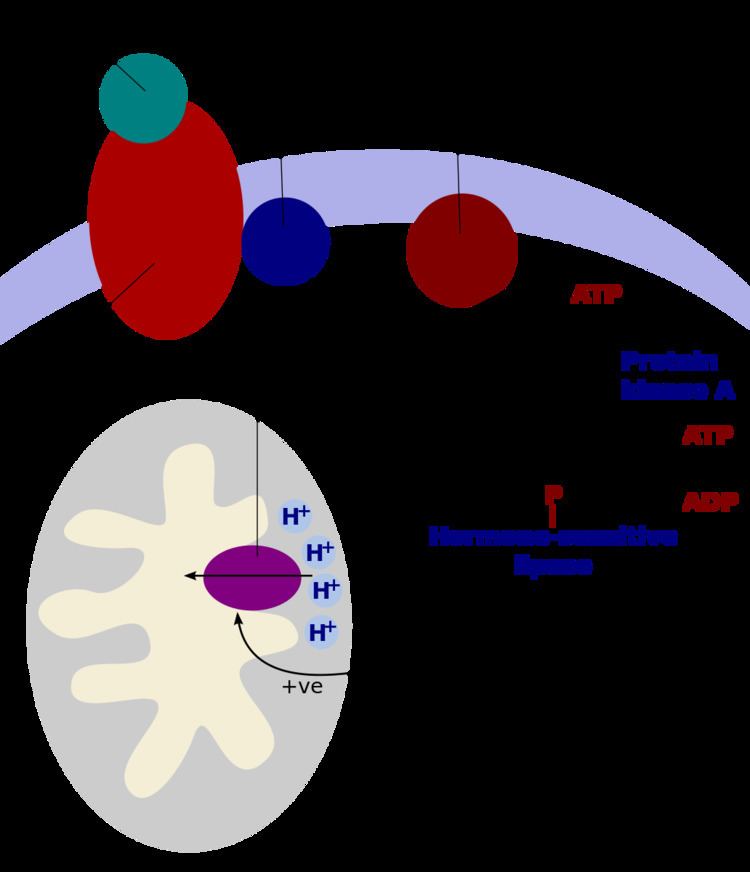 | ||
Thermogenesis is the process of heat production in organisms. It occurs in all warm-blooded animals, and also in a few species of thermogenic plants such as the Eastern skunk cabbage, the Voodoo lily, and the giant water lilies of the genus Victoria. The lodgepole pine dwarf mistletoe, Arceuthobium americanum disperses its seeds explosively through thermogenesis.
Contents
Types
Depending on whether or not they are initiated through locomotion and intentional movement of the muscles, thermogenic processes can be classified as one of the following:
Shivering
One method to raise temperature is through shivering. It produces heat because the conversion of the chemical energy of ATP into kinetic energy causing some of the energy to show up as heat. It is not 100% efficient, meaning while some of the energy becomes heat, a portion is transferred to the kinetic energy that produces its characteristic muscular twitches. No productive movement is produced in shivering because antagonistic muscle pairs are simultaneously activated. Shivering is the process by which the body temperature of hibernating mammals (such as some bats and ground squirrels) is raised as these animals emerge from hibernation.
Non-shivering
Non-shivering thermogenesis occurs in brown adipose tissue (brown fat) that is present in all eutherians (swine being the only exception currently known). Brown adipose tissue has a unique uncoupling protein (thermogenin, also known as uncoupling protein 1) that allows the uncoupling of protons moving down their mitochondrial gradient from the synthesis of ATP, thus allowing the energy to be dissipated as heat.
In this process, substances such as free fatty acids (derived from triacylglycerols) remove purine (ADP, GDP and others) inhibition of thermogenin, which causes an influx of H+ into the matrix of the mitochondrion and bypasses the ATP synthase channel. This uncouples oxidative phosphorylation, and the energy from the proton motive force is dissipated as heat rather than producing ATP from ADP, which would store chemical energy for the body's use. Thermogenesis can also be produced by leakage of the sodium-potassium pump and the Ca2+ pump. Thermogenesis is contributed to by futile cycles, such as the simultaneous occurrence of lipogenesis and lipolysis or glycolysis and gluconeogenesis.
Acetylcholine stimulates muscle to raise metabolic rate.
The low demands of thermogenesis mean that free fatty acids draw, for the most part, on lipolysis as the method of energy production.
Regulation
Non-shivering thermogenesis is regulated mainly by thyroid hormone and the sympathetic nervous system. Some hormones, such as norepinephrine and leptin, may stimulate thermogenesis by activating the sympathetic nervous system. Rising insulin levels after eating may be responsible for diet-induced thermogenesis (thermic effect of food).
